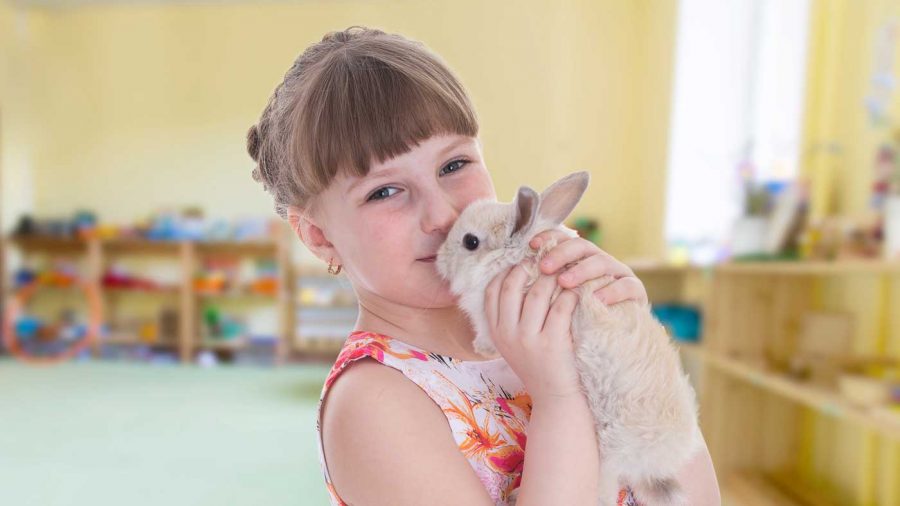Having a pet is one of the single most rewarding experiences, though it can be difficult to describe exactly what makes it so wonderful. Is it the happy presence every time you walk through the door? Is it the silly things they do that make you laugh? Or is it just having a furry little confidant that you can tell every secret to without fear of judgement?
Regardless of what exactly makes pets so great, it cannot be denied that there is something about them that brightens moods and heals the soul. Given this, it is surprising that many well-behaved pets are unwelcome or even forbidden in so many places. This is particularly true in classrooms.
Although it may be unwise to bring pets to the classroom every single day, there is much to be said for the benefits of their presence at least on occasion. In a learning setting, pets can enhance the experience and also provide a calming, steady presence. Furthermore, they can be valuable assistants in controlling medical conditions.
As Learning Enhancers

It may come as somewhat of a surprise to many critics, but there are strong arguments for having pets in the classroom. One is that pets can actually enhance learning by making a teacher’s curriculum more interesting and interactive for students. There are plenty of opportunities to develop lessons in nearly any subject surrounding a class pet.
For example, if there is a classroom guinea pig, a teacher may ask:
- History/Social Studies: Where do guinea pigs come from? How did they become pets?
- Science: What do guinea pigs eat in the wild? What eats guinea pigs?
- Writing: How would our pet guinea pig describe our classroom?
- Math: How much does our guinea pig weigh? How much does he eat?
Pets in the classroom can also help students, especially those without pets at home, form a greater connection with the natural world. Taking care of a classroom pet can help them to develop a more significant sense of responsibility and a greater awareness of the feelings and needs of others. These skills are every bit as important as the course material taught at the front of the classroom.
As a Calming Presence
Pets in the classroom can also have a profound impact on children who are struggling with issues outside of the classroom that could be inhibiting learning potential. A shocking number of children in the U.S. are abused every year — nearly 700,000. Over 26% will experience a traumatic event before the age of 4, and over 60% will by the age of 17. These statistics are painfully sobering, but exposure to a pet could help alleviate some of this hardship.
Studies that have taken place on college campuses across the U.S. indicate that therapy animals and emotional support pets can make a profound difference in reducing stress, anxiety, and depression. Ultimately, they can help students get a better handle on their emotions and process difficult thoughts. Therapy animals have even been linked to a reduction in stress hormones and an increase in happy ones.
These types of animals do not need to be an every day presence in the classroom, but they can make a big difference if they make an occasional appearance. A variety of different pets have served as emotional support and therapy animals including dogs, cats, rabbits, llamas, hamsters, and even horses.
As a Caretaker

For some students struggling with chronic illnesses or mental health issues, having a pet in the classroom can actually provide substantial health benefits. Service animals, for example, can help students get around more easily and can retrieve specific items. However, it is important to remember that these animals are working and cannot be petted and loved on by other students.
The chronic disease multiple sclerosis (MS) makes for the perfect case study of a service animal helping its student in action. The disease commonly impacts the brain and spine and is characterized by fatigue, reduced mobility and balance, and vision problems. Flare-ups are generally treated with specific medications, like .
Service animals can assist learners with MS by helping them get around better, guiding them to certain things, opening and closing doors, and bringing items to their handler. Some dogs have even been trained to sense an imminent flare-up and alert their owner. They can also provide profound emotional support and help their owners cope with their most difficult days.
Having a pet in the classroom, even if it is just occasionally, can have very real benefits for students. While introducing pets into the classroom can involve some concerns, such as potential liability and perhaps the necessity for pet insurance, the benefits they can bring are priceless. Some classroom pets can improve learning by giving students something to care for and incorporate into assignments. Others can provide essential emotional support and health services that benefit every student’s learning environment!





1 Comment
Good